



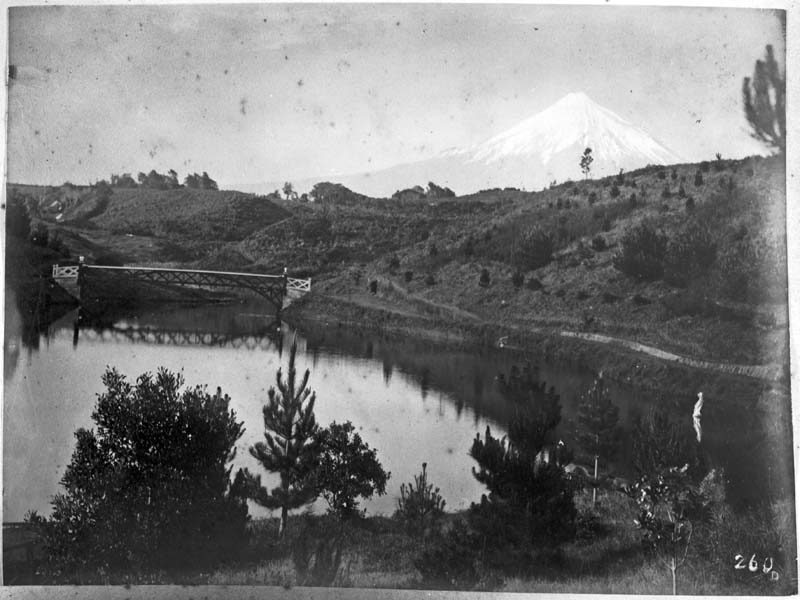
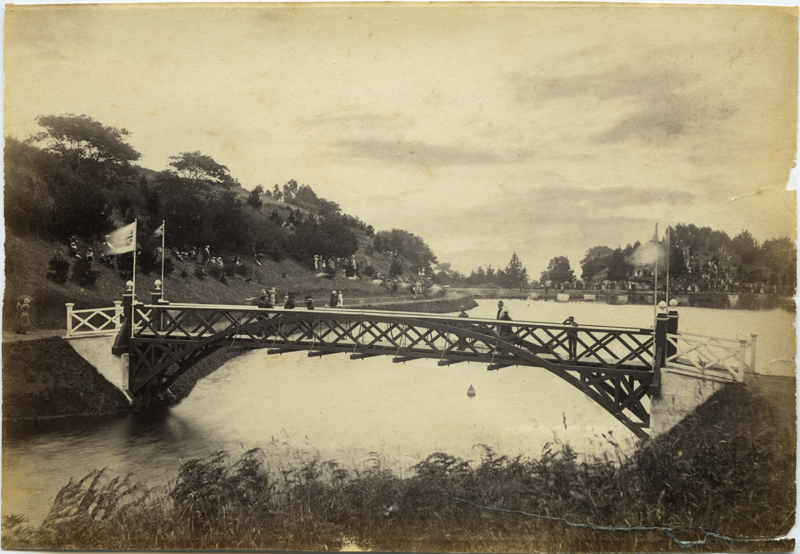
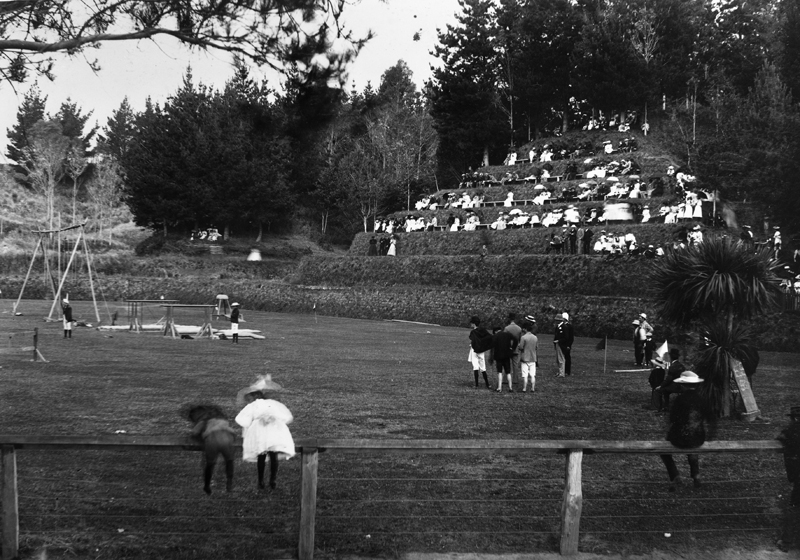
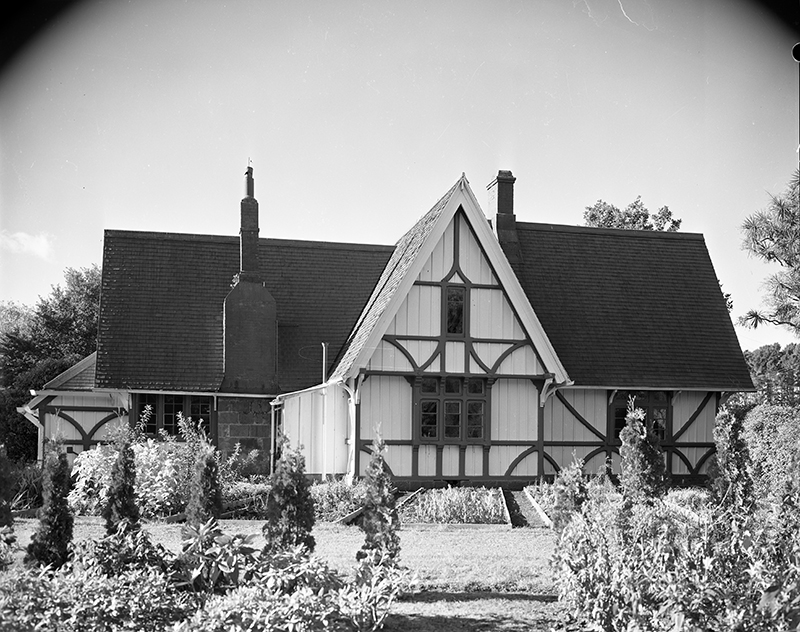
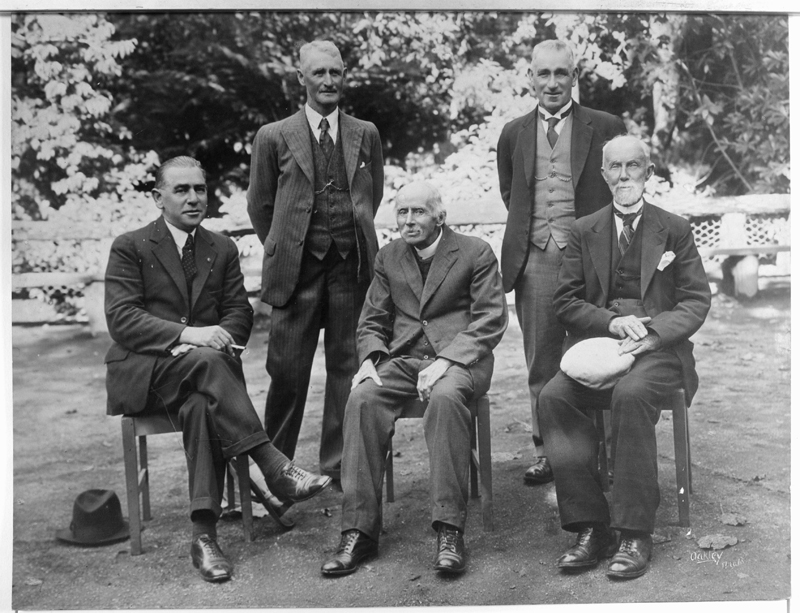
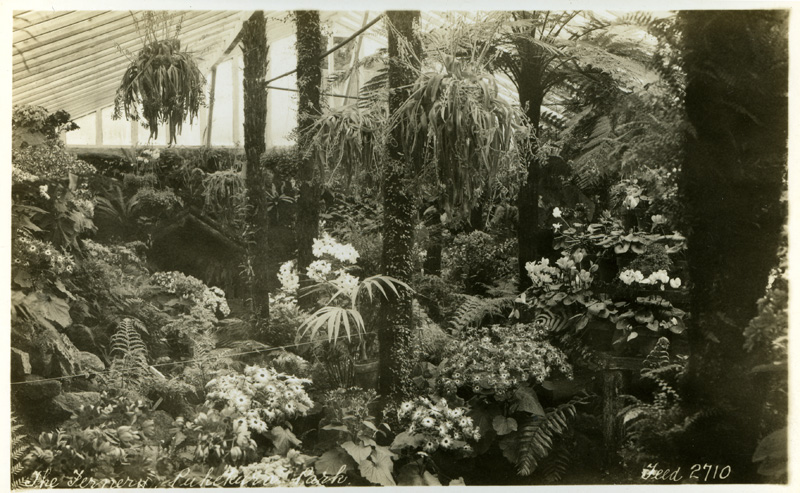
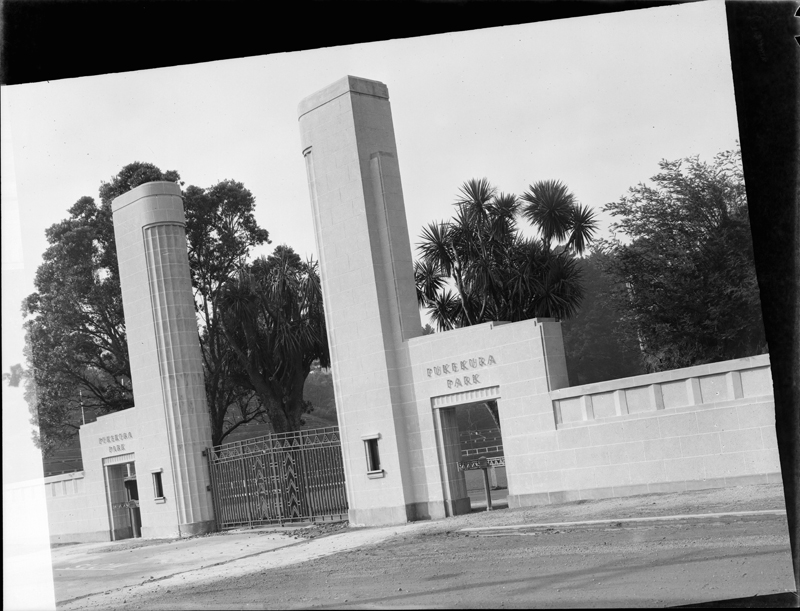
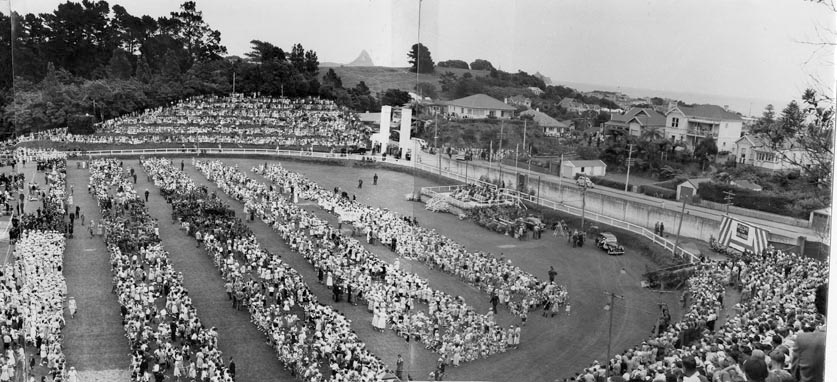
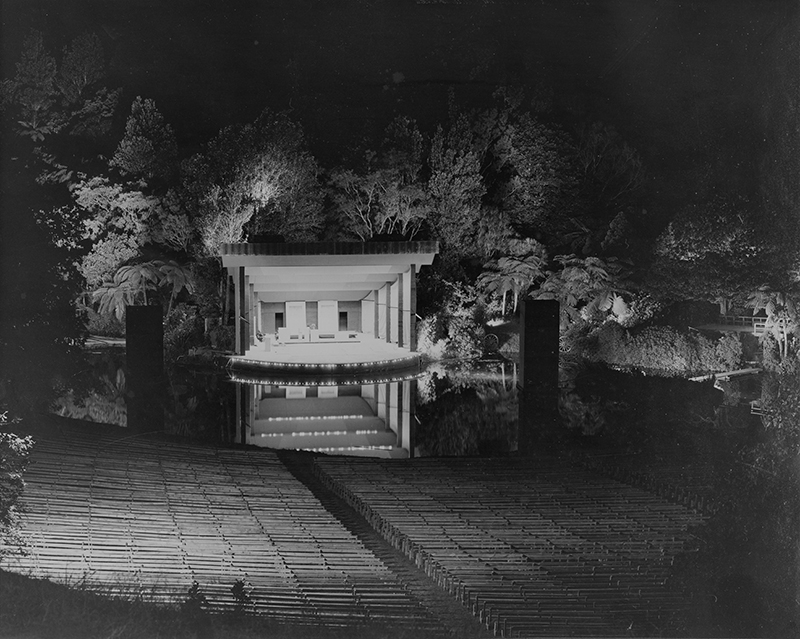
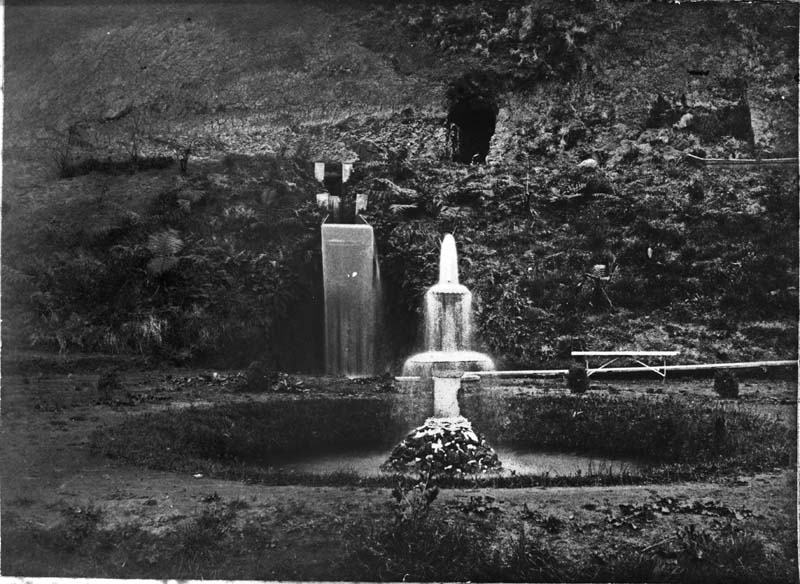
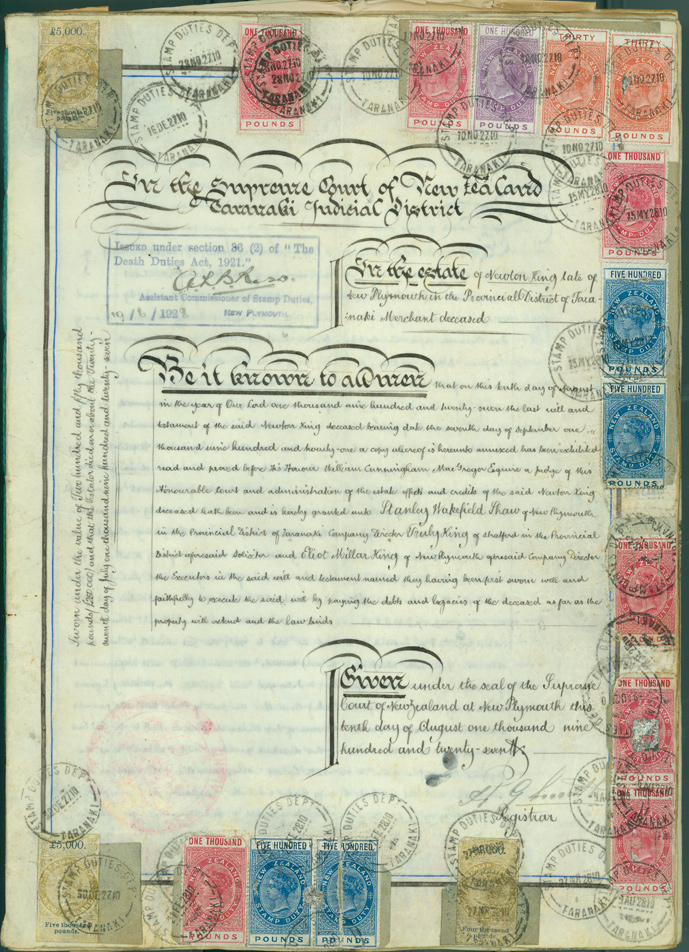
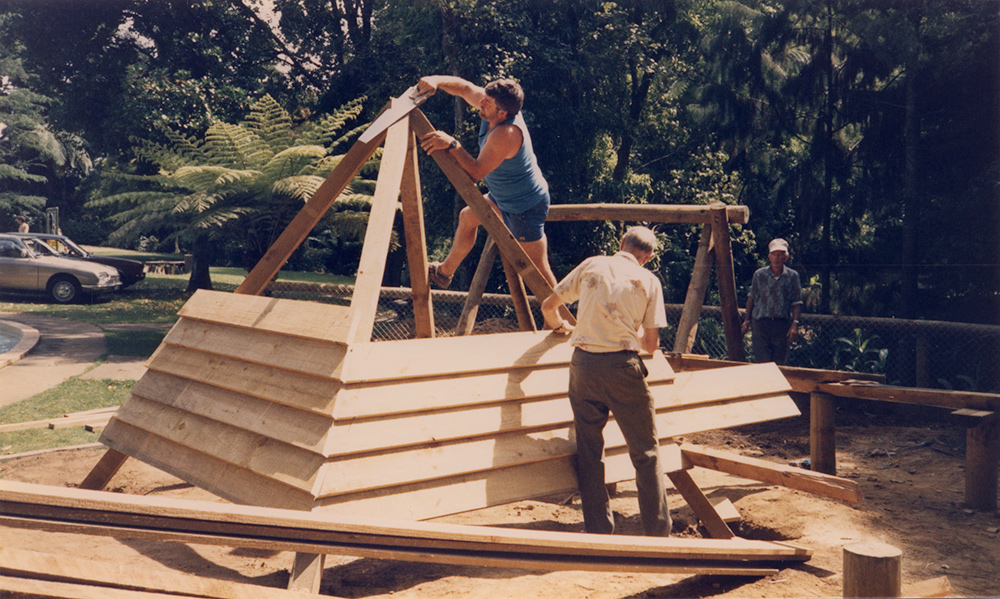

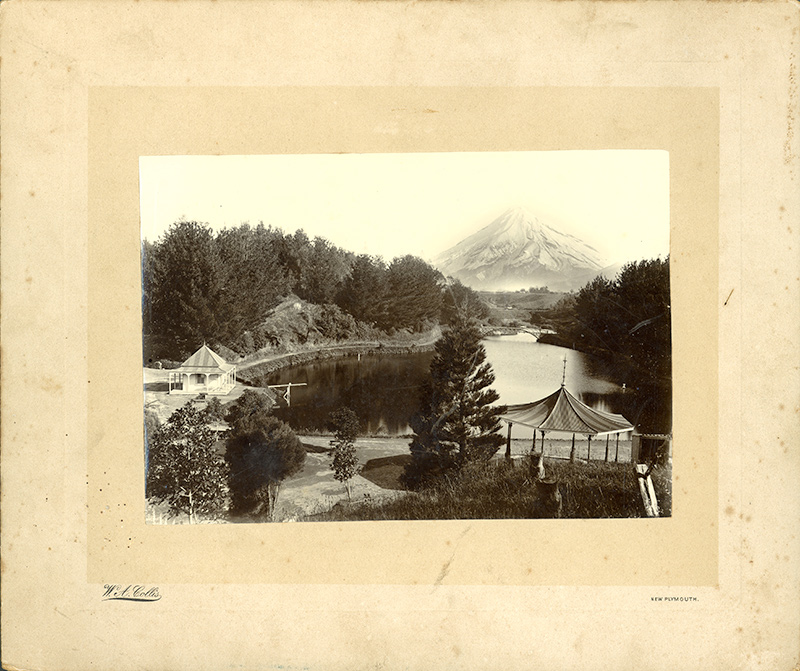
Brooklands is established as a farm by Captain Henry King and becomes the agricultural showplace of the New Zealand Company.
Captain King's house is burnt down by Māori at the end of the First Taranaki War. The remains of the chimney can be seen at Brooklands today.
German vintners Heinrich Breidecker and son Johann are granted a 21-year lease of four acres of land running down the slope of the racecourse pathway towards the area now called Stainton Dell. The vines are not a success, so in 1880, father and son take what they can of their Pukekura vines and head to Hokianga, in Northland.
Gala opening of New Plymouth's 35 acre (15 hectare) Recreation Ground. Thomas King, the first chairman of the board of trustees (and father of Truby and Newton) invites Miss Jane Carrington (daughter of F.A. Carrington) to plant the first trees in the park. These are an oak for Great Britain, a pūriri for New Zealand, a Norfolk Island pine for the South Pacific Islands and a Pinus radiata for America.
Pukekura Stream is dammed to create the main lake.
A bathing shed is built for swimmers to change into their togs.
Work begins on filling in the swamp at the top end of Liardet Street to form the sportsground. This is done with voluntary labour after a women's committee raises funds for materials by holding a fancy dress ball.
The Poet's Bridge is gifted by James T. Davis after a win at the Auckland races. The horse he backed was called The Poet. Its victory earned him £150, which he donated for the bridge.
With the completion of the cutting at the top end of Liardet Street, the main entrance is relocated from lower Victoria Road, the original main entrance to the park.
First football practice is held on the sportsground.
The bandstand is built. This is still standing and is believed to be one of the oldest in New Zealand.
Aged army pensioner Stephen Maloney is found murdered under a pine tree on the path leading from the Main Lake to Rogan Street, now Horton Walk. Mahi Kai is convicted and sentenced to death, but this is commuted to life imprisonment. He was released on 5 December 1906.
Early in this decade, grassy terraces are built around the sportsground.
First cricket match held on the sportsground.
Lower lake (later to be known as the Fountain Lake) is formed.
Drinking fountain by the band rotunda is erected to mark Queen Victoria's Diamond Jubilee.
Sportsground is improved and enlarged.
A derelict colonial hospital is moved on to the Brooklands property at the request of Mary King. Now called the Gables, the infirmary was built in 1847-48 and is New Zealand's oldest surviving hospital. Today it is headquarters for the Taranaki Arts Society.
After much debate, the name Pukekura Park is adopted. For years, the area has simply been known as “The Rec”. The park is named after the stream dammed to form the lake. One translation of Pukekura is Red Hill.
Thomas Horton takes over as curator of the Pukekura Park.
Fernery and (Stainton) Dell are opened by Mayor H.V.S. Griffiths.
Pukekura Park Board passes the park's administration to the New Plymouth Borough Council. Before this, it was independent from any type of local body or central government funding. However, a Pukekura Park committee of citizens answerable to the council ensured the continuation of strong community input.
The Teahouse (now known as the Kiosk) is built from funds provided by Mayor and Mayoress Charles and Mary Burgess as a celebration of their golden wedding.
On 10 March, Brooklands is formerly handed to the New Plymouth Borough Council by the trustees of Newton and Mary King's estate. The 53 acre (21.5 hectare) property is given in lieu of money promised to the town in Newton King's will. That same year, the magnificent Newton King homestead, Brooklands, is demolished.
Also, a three-hectare portion of newspaperman Thomas List's Maranui property is added to the original Pukekura Park.
Main entrance gates are built following a bequest from Charles Score Sanders, a respected Taranaki horticulturalist.
An extra glasshouse is brought from Brooklands, where it had once sheltered a grape vine, and added to the fernery area.
Thomas Horton retires and John (Jack) Goodwin takes over as Pukekura Park and Brooklands curator.
Queen Elizabeth II and the Duke of Edinburgh are welcomed to New Plymouth, with a reception at Pukekura Park.
To celebrate the Royal visit, the illuminated fountain is erected in the lower lake. This fountain has 228 water jets, the highest reaching 15 metres.
Children's playground opens off Victoria Rd. Sportsground is converted into a five-circuits-to-the-mile track and the eastern terrace is sliced to provide space for a 100 metre sprinting track.
Between these years, the hatchery lily pond is filled in and turned into the Hatchery Lawn.
Bowl of Brooklands opens with the first Festival of the Pines event.
A New Plymouth Borough Council by-law bans people from bathing or wading in the park lakes or waterways, reversing the original concept.
A New Plymouth Borough Council by-law bans people from bathing or wading in the park lakes or waterways, reversing the original concept.
A paddling pool is added to the children's playground at the bottom of Victoria Road.
Alan Jellyman becomes assistant curator to Jack Goodwin.
Brooklands Zoo and children's playground opens. The funds, materials and craftsmanship are all provided by New Plymouth Jaycees.
George Fuller is appointed curator.
The fernery gets a brand new glasshouse, named the Kibby House. This modern structure, which is four times the size of the original glasshouse that came from Brooklands, is paid for by Mr and Mrs G. Kibby.
The old bathing shed next to the main lake is demolished.
Illuminated waterfall opens.
Waterwheel from the Ōmata Dairy Factory is installed as a New Plymouth centennial project. As part of these celebrations, D.V. Sutherland plants a Norfolk Pine on Cannon Hill, using the same spade that Miss Jane Carrington used to plant the first trees on 29 May 1876.
Jogger Wendy Snowdon (aged 23) is raped and left for dead near the List Street entrance to Pukekura Park. She dies in hospital on 7 December. Gary Lawrence McKinley is convicted with her rape and murder.
Regional amalgamation is imposed by central government. Because of space limitations for park administration, this leads to the Parks and Recreation Department being moved from its headquarters within Pukekura Park to the council offices on Liardet Street.
Bowl of Brooklands stage and seating are extensively updated.
The unveiling of the Mishima Gate in Pukekura Park, marking 10 years of the sister-city relationship with Mishima in Japan.
The Fuller Walk is named in honour of former curator George Fuller.
WOMAD (World of Music and Dance) is held in the Bowl of Brooklands, the zoo and adjoining park, turning the area into a global village of sound and arts.
Kunming Gardens in Brooklands Park gifted by Kunming, sister-city in southern China.
The TSB Festival of the Lights is named Creative New Zealand’s premier Cultural Festival and Arts Event.
Pukekura Park teahouse is largely rebuilt, however much of the character of the original is retained.
Former Pukekura Park curator George Fuller wages a successful eight-week campaign to save a stand of native trees under threat at the entrance to the Bowl of Brooklands. He is named ‘Person of the Year’ for 2009 by the Taranaki Daily News.
Fleetwood Mac play two sold out nights at the Bowl. A platform located on the lake in front of the Bowl stage, with seating for 1044 people, is used for the first time.
After a long-running debate and problems with funding, practice cricket nets are finally completed adjacent to the Pukekura Park cricket ground on Fillis Street.
The contract to host WOMAD at the Bowl of Brooklands is extended until at least 2024.
Scanlan, A.B. (1978). Pukekura: A centennial history of Pukekura Park and Brooklands. New Plymouth: New Plymouth City Council.
Pukekura Park Board (1929). History of Pukekura Park and the ceremony of vesting in New Plymouth Borough Council, Thursday 17th October, 1929. New Plymouth: Pukekura Park Board.
Quinn, P. (1999). Pukekura and Brooklands: a park for all people. Thames: Quintessential
Brown, Kath and Gordon (ed.) (2012). Bowl of Brooklands. Friends of the Bowl of Brooklands Trust Inc.
Please do not reproduce these images without permission from Puke Ariki.
Contact us for more information or you can order images online here.